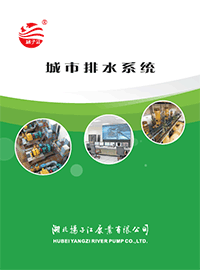



Urban drainage system is a latest smart urban storm/sewage drainage system jointly designed by Yangtze Pump Co., Ltd and research institutes at Huazhong University of Science & Technology and Wuhan University of Technology.
The entire system comprises a waterlogging point and water volume prediction system, a pumping system, a drainage control system and the associated electrical and mechanical systems.
A digital combination of storm/sewage waterlogging point and waterlogging depth prediction, online urban lake and piping analysis, storm/sewage level warning, smart CCR & pump house (unit) control and automatic unit drainage allocation, the urban drainage system offers an effective solution to inefficient information communication on urban piping and lake storage functions, bad weather exposure, primitive human attendance, complicated manual operation, and illogical configuration of pumping units.
Features of "urban drainage control system"
1. Optimize the layout and operation of pump station
Flooding depths are predicted by simulating with our proprietary hydraulic model the waterlogging process and waterlogging conditions of urban storm and storm flow at individual nodes of the urban pipe network according to the layout of the urban pipe network, thereby optimizing the layout and operation of the pump station.
2. Optimize the management and control of pump station
An integrated storm/sewage dispatch management center is installed downtown to provide a global overview. A large integrated control management display and a central control system located in the integrated dispatch management center display real-time conditions and operation status of storm/sewage pump stations throughout the city (including, among others, operating data and video monitoring screens of pump stations), with options for manual, remote control of pump operation at each station, setting of weather and level parameters, monitoring of waterlogging conditions at the stations, and automatic, smart control of the entire pumping system of the city. The system also gives alarms against the level or waterlogging depth settings, and outputs and uploads data to specific departments.
Functions of the control system
Our "urban drainage control system" is designed with three control levels, the first two of which are realized at the pump stations while the third is central control.
Level 1: Local manual control
A local manual control box is mounted at the pump site of each pump station to start or stop the equipment and actuators separately.
Level 2: PLC (programmable logic control)
The station PLC system automatically controls the operating status of the electrical equipment at the station according to data acquired from the equipment on site and the operation logics of the system equipment.
The control system allows both "LOCAL MANUAL" and "AUTO CONTROL".
The station control system incorporates the latest profibus technique which, through the common bus, makes all the distributed automatic devices, including automatic smart meters, sensors, actuators and transmitters, directly into a network.
Level 3: Central control
This allows real-time monitoring by means of computer monitoring and modification of PLC control parameters, jogging control by host computer, and automated, integral urban drainage control.
High automation and easy control significantly reduces operation and management costs. The automatic control system also provides for flexible configuration as desired by user with options for either level 1, local manual control, alone, or both level 1, local manual control, and level 2, PLC control.
The high smart level, functionality, operability and security of the urban drainage system helps guarantee, and substantially adds to, the reliability of this urban and regional flood control capability, safeguards urban security and raises the GNH index.
Fig.1: Measured versus actual flow of storm sewer network at the calculation nodes
Fig.2: Location and number of waterlogging points of urban storm sewer network simulated by hydraulic model
Fig.3: Waterlogging depth of waterlogging points of urban storm sewer network simulated by hydraulic model
Network of a typical urban storm/sewage drainage monitoring system



